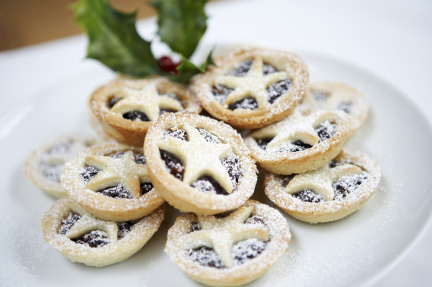Inspired by the boozy, fruity richness of the mince pie, this year we have developed our very own festive favourite:
Mince Pie Luxury Ice Cream. So we thought it only fair that we bestow a little festive knowledge!
The History of the Mince Pie
Mince pies evolved from a medieval pastry called “chewette.” which was made with chopped meat or liver, boiled eggs, ginger, dried fruit and other sweet ingredients. It is said that King Henry V was served mince pies as part of his coronation celebrations, which took place in 1413.
When men began returning from the Crusades during the Medieval period, they introduced new fruit, spices and flavours to the British kitchen which quickly made their way into a whole host of savoury recipes. It was also a handy way of making a little meat go a bit further, and disguising the taste of meat that was past it’s best. By the time the Tudors got to the throne mince pies were a well-established treat. Apparently, even Henry VIII like to indulge in (probably one-too-many) mince pies!
It is still unclear how the mince pie became so closely linked with Christmas. Some believe that the three main spices (cinnamon, nutmeg and cloves) are meant to represent the three gifts of the Wise Men, whilst others believe the historically rectangular shape was meant to represent Christ’s cradle. However it came about, during the Puritan era, mince pies were so synonymous with Christmas that Oliver Cromwell’s parliament attempted to ban them (along with Christmas and all the food and festivities that went with it). However, by the 1800s mince pies (and the monarchy!) had been restored to their rightful place and a cook named Richard Briggs detailed a recipe which is remarkably similar to those we still eat today, although savoury recipes containing meat were still common right up to the Victorian era.
Don’t panic… our version is strictly sweet!

